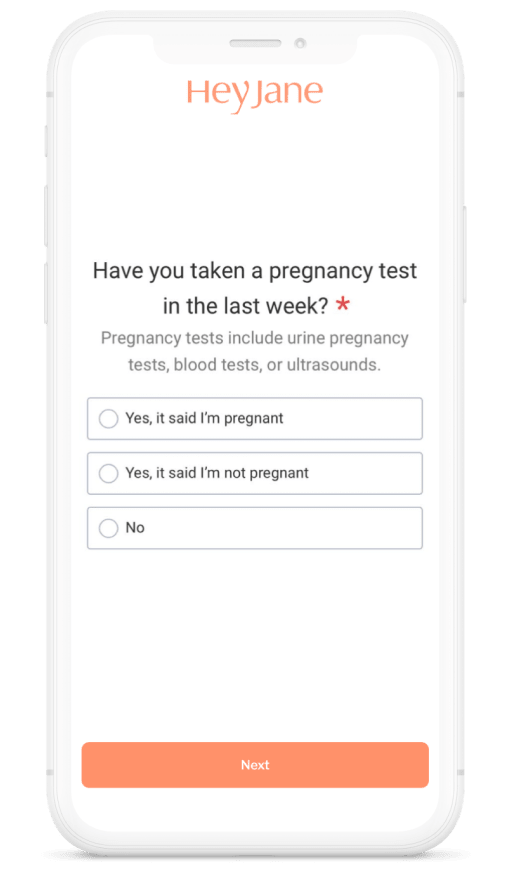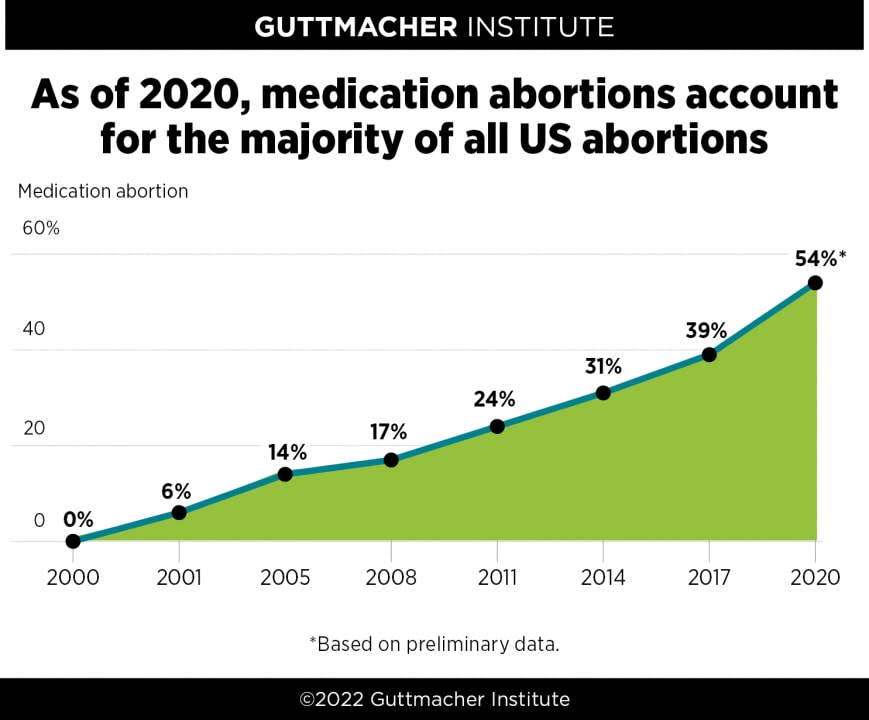The Mail-Order Abortion Boom Is Here

As Roe v. Wade hangs in the balance, telemedicine startups offering mail-order abortion pills are scrambling to meet surges in demand for remote abortion care across the United States. These sleek, modern tech companies like Hey Jane, Just the Pill, and Carafem claim to offer safe, seamless, and effective abortion care at a distance.
Leah Coplon, a nurse midwife, abortion provider, and director of clinical operations at tele-abortion company Abortion on Demand, told The Daily Beast that countless patients remind her of the essential nature of this digital approach—patients who are living with abusive partners and are stealthily obtaining pills, patients in rural areas of the country where travelling to a clinic poses challenges, young people who do not feel safe disclosing their need for care, and those with common everyday obstacles like getting time off work, childcare, or transportation.
For these patients, telehealth may streamline the abortion experience, and help free up space at overburdened abortion clinics. But in a polarized political landscape fraught with legal risk, tele-abortion companies face the equity and access challenges that in-person providers experience. Ultimately, in a post-Roe world, tele-abortion will likely still be illegal in half the country.
However, this “21st-century abortion care” is the present and future of health care, Elisa Wells, a public health expert and cofounder of the abortion pill information campaign Plan C, told The Daily Beast. The organization’s website provides information and data on various mail-order abortion services organized by state. Prior to the leak, Place C averaged about 2,300 users per day. On May 3, the site toppled 56,000 visitors.
Still, even Wells cautions that this alternate route of abortion access “is not a silver bullet. It's not going to help everybody.”
In 2020, drug-induced abortions accounted for more than more than half of abortions occuring within the U.S. If Roe falls, this number is expected to spike. (After the SCOTUS leak broke, Google searches for abortion pills increased fivefold.)
“Unlike 1972, in 2022 we have safe and effective pills that put the power back in people’s hands, and we have the technology to connect with people and give them medical and emotional support, no matter where they are,” Kiki Freedman, CEO of tele-abortion startup Hey Jane, told The Daily Beast. Hey Jane’s clinical team is currently seeing nine times as many patients as this time last year, and is strategically operating in six states that will account for the majority of abortion volume nationwide post-Roe.
“Telemedicine abortion is a bright spot in all of this—but it’s not a panacea,” Freedman said. The reality is that overturning Roe v. Wade—and the cruel bans that have already been in place—will be “absolutely devastating” to pregnant people, especially Black and brown people, low-income people, and young people, she added.
Daniel Grossman, a physician, obstetrician, and gynecologist at the University of San Francisco, told The Daily Beast that he’s operated in international settings that hint at reality in a post-Roe America. In places without access to safe, legal abortion care, he said people sometimes attempted to end a pregnancy using herbal remedies, getting kicked in the abdomen, or even inserting something into the vagina, with some becoming very sick or dying. Self-managed medication abortion may help ensure these back-alley abortions remain relics of the past.

Hey Jane can help connect users with a tele-abortion service available to their state.
After approving abortion pills in 2000, the Food and Drug Administration decided this past December to loosen restrictions—ruling that tele-abortion care is safe and effective, and granting certified prescribers and pharmacies the ability to mail medication to eligible patients.
Medication abortion involves a two-pill process. First, patients take a single dose of mifepristone, which blocks a hormone that maintains pregnancy called progesterone. In a standard protocol, patients then take a dose of misoprostol within 48 hours, which triggers contractions, bleeding, and empties the embryo from the uterus. In the U.S., abortion pills like these are approved for use during the first 10 weeks of gestation. The World Health Organization considers them safe for up to 12 weeks.
Studies show medication abortion is about 95 percent effective in ending pregnancy. Less than 1 percent of cases result in complications like hemorrhage or infection—making the drugs safer than over the counter Tylenol.
Tele-abortion also tends to be slightly cheaper than clinic-based care, too, which ranges from about $400 to $1000. Hey Jane’s services cost $249, while Abortion on Demand costs between $239 and $289 out of pocket. Most tele-abortion companies guarantee patients will be seen by a health provider within 48 hours.

Tele-abortion services offer a two-pill process to terminate a pregnancy at home.
“Anybody who looks at what's going on in this country should just be absolutely appalled that we have modern medical technology in the form of abortion pills and telemedicine, and overnight shipping. And yet, in half of our country, there are states that are banning this,” Wells says. “We also have research showing that this is safe, effective, and patient-centered.”
Beyond cost and speed, remote care can also buffer against some possible uncomfortable dimensions of an in-person visit: enduring lengthy wait times, interacting with anti-abortion protesters, or bumping into a familiar face. Coplon said patients can take abortion pills “at home in their PJs” or with the support of a friend or loved one—a benefit that can alleviate some of the potential emotional effects of having an abortion.
However, in states where telehealth for abortion and mail-order abortion pills are illegal, using these services directly, or aiding someone in doing so as a provider or individual, can land people in legal hot water. People of color who are already targeted by existing racist and discriminatory law enforcement practices, as well as systemic bias in accessing health care, will suffer the highest risk of criminalization.
That said, even in states where abortion is illegal, patients can obtain abortion pills by mail from overseas providers such as Aid Access. Mail-order abortion pills can be shipped discreetly and may be difficult to track, in some cases evading the detection from those who seek to ban their use. But taking this alternate route that operates outside the U.S. legal and regulatory framework, carries legal risks, though.

Medical abortions account for 54 percent of all U.S. abortions.
There is legal, medical, and financial support available to those who want to self manage their abortion at home. But Coplon cautions that some people, especially those living in states with near-total or outright bans on abortion, will still suffer complications due to legal risks. The very rare complications of medication abortion can become more fraught if people are too scared to access things like antibiotics or IV fluids because of the risk of criminalization.
Health providers also may face steeper legal risks than patients. Currently, abortion providers are prohibited from providing telemedicine across state lines and mailing abortion pills to eligible patients, but certain states like California and Connecticut are moving to pass legislation that could protect providers who offer abortion care out of state.
While there is promise with telehealth, some worry that tele-medicine may undermine already underresourced, overstretched clinic-based care due to their cheaper out-of-pocket costs. In the past decade, over 250 abortion clinics have closed across the U.S. and there are currently six states with one abortion clinic remaining. Clinics are “the backbone” of abortion care, and Coplon stressed that tele-abortion companies should support, not replace them. Many tele-abortion companies, like Abortion on Demand, donate some profits to local abortion clinics in this effort.
Telehealth abortion and telehealth care, generally, also skews to benefit people with higher incomes, literacy, and English-speakers, Coplon explained. These are crucial barriers to access as 75 percent of abortion patients are low-income. Nearly half live at less than the federal poverty level.
With modern tech and pharma, abortion care is becoming more efficient than ever. But whether telehealth will overcome these mounting barriers and bring abortion into the 21st century for all patients remains unclear.
“With the overturning of Roe, there will be major gaps that telemedicine alone can’t fill,” said Freedman.
Get the Daily Beast's biggest scoops and scandals delivered right to your inbox. Sign up now.
Stay informed and gain unlimited access to the Daily Beast's unmatched reporting. Subscribe now.

 Yahoo Movies
Yahoo Movies 
